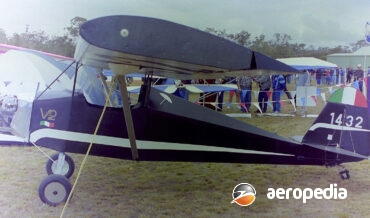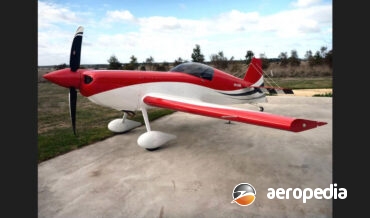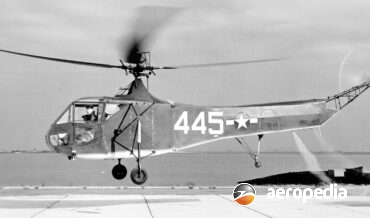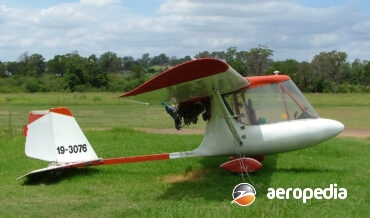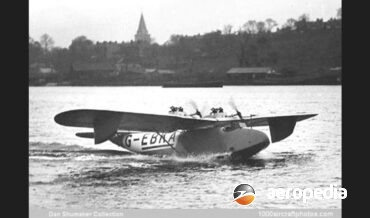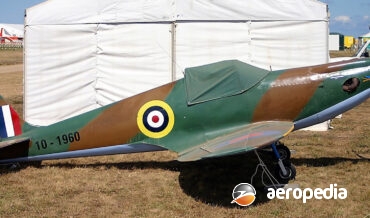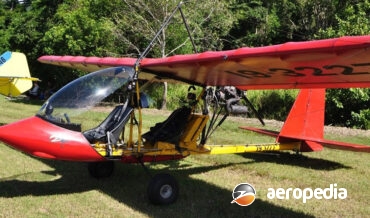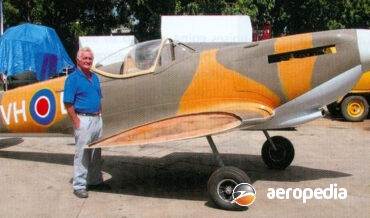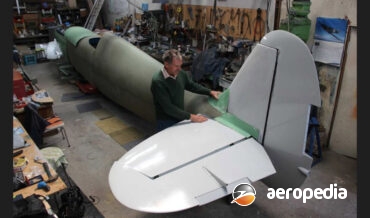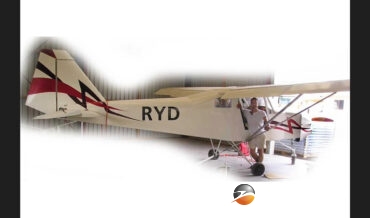All Contents
Contents
Mr G S Richardson in 1900 moved to the town of Penguin in Tasmania in 1900 and built and operated a small cordial drink facility.
David C. Eyre
- May 25, 2020
This was a one-off ultralight aircraft built by its designer / owner which was registered on 11 February 1994 as 10-1432 (c/n 1432) and is painted dark blue with white trim, a tailwheel undercarriage and a parasol wing with single struts.
David C. Eyre
- May 25, 2020
Replicraft, an American company, has produced plans to build scale replicas of the SPAD VII, SPAD XII, Roland D.VI, Hanriot HD.1, Sopwith Pup, Thomas Morse, Fokker D.VII, Sopwith Camel, Sopwith Triplane, RAF SE.5a and the Sopwith Snipe.
David C. Eyre
- May 25, 2020
This was an attempt to build a man-powered aircraft by a Mr Ranford in Western Australia. Little is known about it but at one stage it was placed on display at the WA Aviation Heritage Museum at Bull Creek, WA but after sometime was removed and placed into storage.
David C. Eyre
- May 25, 2020
In mid 1926 Mr Edwin Prosser of Rockhampton, Qld enquired of the Comptroller of Civil Aviation if it was necessary to obtain a Certificate of Airworthiness for a light aircraft, indicating he was building a monoplane.
David C. Eyre
- May 25, 2020
Little is known about this one-off aircraft but it was registered with the RAA as 19-4671 (c/n 60001) on 6 December 2000 and was withdrawn from service on 7 May 2011.
David C. Eyre
- May 25, 2020
The ASW-20 was designed by Gerhard Walbel and built by Alexander Schleicher GmbH & Co in Germany, Some 765 were built by the Company in Germany and a further 140 were completed in France by Centrair.
David C. Eyre
- May 25, 2020
The PP-108 is a single-seat high-performance low-wing monoplane designed and built by Peter Prendergast of Ocean Grove Vic for high-performance aerobatics. It received its C of A on 11 March 2016 and was first registered on 29 February 2016 as VH-XSK (c/n 0015).
David C. Eyre
- May 25, 2020
In 1930 Lawrence Schaeffer of Loxton, SA commenced construction of a two-seat parasol wing monoplane to be fitted with a converted Dodge four-cylinder motor car engine.
David C. Eyre
- May 25, 2020
The Maya Ultralight was a single-seat ultralight aircraft aircraft with an enclosed cabin and powered by a 21-kw (28-hp) Konig SD-570 four-cylinder engine with an adjustable propeller.
David C. Eyre
- May 25, 2020
This was a one-off ultra-light amphibian built it is believed in Queensland, the prototype was completed becoming 19-4649 (c/n 3) and it was registered on 12 April 2006.
David C. Eyre
- May 25, 2020
In 1909 Messrs John Pechugin, a mechanical engineer and draftsman, and Henry Little, a foreman boilermaker, designed and built an aeroplane and are reported to have conducted secret trials of this aircraft on the Basic Reserve in Wellington.
David C. Eyre
- May 25, 2020
The Swift was a single-seat light sporting monoplane developed and marketed in the 1960s in Australia and saw some success. It was powered by a Cuyuna engine which produced 22-kw (30-hp).
David C. Eyre
- May 25, 2020
The HNS-1 was first flown in 1942. In March 1947 the US Coast Guard icebreaker USS Northwind visited Wellington, NZ on its return from the Antarctic where it formed part of the 1946-47 expedition code named Operation Highjump of Admiral Byrd.
David C. Eyre
- May 25, 2020
The Sundowner was one of a series of aircraft produced by Sport Aircraft for the ultra-light market.
David C. Eyre
- May 25, 2020
The Shuttle two-seat three axis strut-braced high wing with flaperons ultralight aircraft with an enclosed cabin was produced for some years in the early 1990s and is similar in appearance to the Cadet Boorabee.
David C. Eyre
- May 25, 2020
Mr W Lance Sporer lived on a farm at Glencoe near Mt Gambier in the 1930s and developed some interest in engineering, taking a correspondence course. He became involved in the reconstruction at Mt Gambier of a de Havilland DH.60 Moth which crashed near Jerilderie.
David C. Eyre
- May 25, 2020
The Short S.1 Cockle was a small flying-boat designed and built by Short Brothers in 1924, it being designed for and ordered by Lebbeus Hordern of Sydney as a replacement for the Short Shrimp then in service.
David C. Eyre
- May 25, 2020
The Spitfire SW-1 registered with the RAA as 10-1960 (c/n SPT-01) is a scale replica of the Supermarine Spitfire and is a one-off aircraft designed and built in Australia by the owner.
David C. Eyre
- May 25, 2020
Darcy Shipman lived in Glenreagh, NSW and built a light aircraft similar in appearance to a de Havilland DH-53, being a low-wing monoplane fitted with a modified Henderson motor-cycle engine.
David C. Eyre
- May 25, 2020
This was an ultralight aircraft similar in appearance to a Thruster 500 and became 19-3227 (c/n 891662) and, fitted with a Rotax 582 engine, was registered under RAA regulations in Queensland on 10 September 1999.
David C. Eyre
- May 25, 2020
This was an ultra-light aircraft which was allotted the registration 19-1309 (c/n 2) by the RAA and appeared on the register from 17 October 1991 to 3 December 2008.
David C. Eyre
- May 25, 2020
The Pegasus was an Australian designed ultra-light for the local market. It was powered by a 34-kw (45-hp) Fuji Robin engine.
David C. Eyre
- May 25, 2020
The Drifter is one of a series of ultra-light aircraft produced by Seabird Aviation of Hervey Bay Queensland. A small production batch was built, and a couple survive, including 25-0256 (c/n DR90-0401) and 25-0319 (c/n DR89-0375).
David C. Eyre
- May 25, 2020
Very little is known of this aircraft. It was a single-engine high-wing strut-braced monoplane with its tail on a boom and the engine mounted on the framework and a tricycle undercarriage.
David C. Eyre
- May 25, 2020
The ASW-29 is one of a series of self-launched gliders produced in West Germany and it was produced in a number of variants.
David C. Eyre
- May 25, 2020
Nestor Slepcev, who migrated to Australia from Yugoslavia, is known for his design and development of the Storch series, which has sold in some numbers around the World.
David C. Eyre
- May 25, 2020
This was a light two-seat training aircraft with side-by-side seating designed and built by Nestor Slepcev at his production facility at Beechwood, NSW.
David C. Eyre
- May 25, 2020
Sydney Nelson Staff at Harris Park, near Parramatta, NSW, built an aircraft of his own design, the machine being complete by 18 July 1910.
David C. Eyre
- May 25, 2020
The Husky was a one-off ultra-light aircraft and was a 75 percent basic scale representation of the Piper Cub. It was registered with the RAA as 10-1377 (c/n 9202) from 16 December 1992 to 5 March 2002.
David C. Eyre
- May 25, 2020
The Sportair was a single-seat kit-built ultralight fitted with a 37-kw (50-hp) Rotax 503 engine. It had a cruising speed of 139 km/h (86 mph) and a stalling speed of 56 km/h (35 mph).
David C. Eyre
- May 25, 2020
The Junior was designed and built by ex-South African Francois van Teijlingen who for many years had an interest in helicopters and gyrocopters, building three Bensen Gyrocopters and owning a Scorpion and a Brantly B-2 for a period.
David C. Eyre
- May 25, 2020
This was a single-seat ultralight aircraft built by Mr R Sweetapple with an enclosed cockpit which was registered with the RAA as 10-483 (c/n 1) on 20 July 1988.
David C. Eyre
- May 25, 2020
An unidentified aircraft was noted at Hoxton Park, NSW in 1966. It was powered by three single-cylinder engines driving a single propeller.
David C. Eyre
- May 25, 2020
The Spitfire Mk IV Replica is an 80 percent replica of the World War II Supermarine Spitfire, designed and initially produced by Brian Foxley-Conolly in Queensland, who had previously designed and commenced production of the Foxcon Terrier series of light aircraft.
David C. Eyre
- May 25, 2020
As noted above, Stephen Cohen designed a number of aircraft which were built by this company, including the Avenger, one of which was involved in an incident 2 km south-east of Caboolture on 7 February 1988.
David C. Eyre
- May 25, 2020
In March 2018 it was announced Mr Rodney McNeill, a Vietnam veteran, was building a full-scale replica of a Spitfire Mk I.
David C. Eyre
- May 25, 2020
This was an ultralight aircraft designed and built by Graeme John Tygar and it was known as the Tygar Mk I.
David C. Eyre
- May 25, 2020
This aircraft was designed as a one-off by Rino Stoof of Cambridge, NZ in the late 1990s and was almost completed and is known to have got to the stage of engine runs.
David C. Eyre
- May 25, 2020
This was a single-engine, tricycle undercarriage light aircraft of amateur design and construction completed in mid 2008 by Lyndon Trethewey of Goolwa, SA.
David C. Eyre
- May 25, 2020
Recent Comments
Archives
Categories
- No categories
Categories
- No categories
Latest Posts
Newsletter


